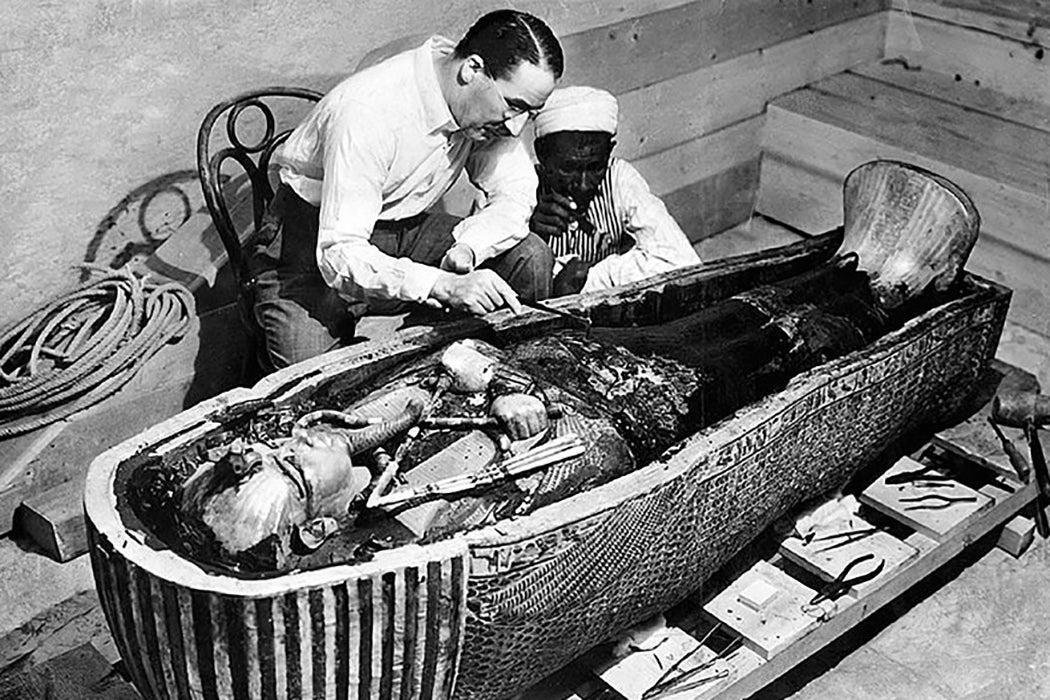While examining remains from an archaeological dig of a Late Medieval cemetery in Hungary, researchers were surprised to find that the tiny skeleton of a premature or stillborn baby had an unusual feature: one of the baby’s hands was green and mummified. Mummification simply indicates the prevention of decay. In this case, the copper from a coin in the baby’s grip had leached into the tiny hand and prevented decomposition. It’s one of the only known instances of a copper-made mummy. But from Egypt to Alaska, there’s more than one way to mummify.
The masters of mummification were, of course, the ancient Egyptians. As described by paleobiologist Arthur C. Aufderheide and colleagues in the Journal of Egyptian Archaeology, the basic process was to remove the internal organs, then apply a hard resin to the body. The brain was dealt with by the unpleasant-sounding process of “transnasal craniotomy,” i.e. pulling the brain out through the nose. Then the entire corpse was wrapped in bandages.
There was considerable variation among the mummies Aufderheide et al. describe in Egypt’s Dakhleh Oasis, especially concerning the application of the preservative resin. In some cases the resin was applied lightly to keep the bandages adhered, while in other cases large quantities of resin were poured directly into the body cavity or mouth. The oddest mummy was the jigsaw puzzle version: it was constructed of parts from multiple bodies, including both adults and children, held together by a frame. Aufderheide and colleagues do not hypothesize about what purpose this unusual kind of mummy may have served.
Thousands of miles away in East Asia, mummification was handled differently. Historically, mummies in the region were prepared by wrapping bodies in cloth and then coating the finished product with lacquer. Religious studies scholars Douglas Gildow and Marcus Bingenheimer discussed preparation of mummies by Taiwanese Buddhists. In one example, the body was intended for mummification from the beginning. After being stored in a container with charcoal and lime to disinfect and dehydrate, the resulting mummy was gilded with metal. In a second example, mummification was chosen after a failed attempt at cremation. Monks placed the partially-cremated body inside a lifelike bronze shell for permanent preservation.
That second case illustrates what might be the most common method of making a mummy: by accident. At the Dakhleh Oasis, many mummies occurred naturally by means of the hot, dry climate which baked and dehydrated the bodies. Accidental mummies were apparently also common in East Asia. But according to pathologist Michael Zimmerman in American Scientist, some of the best examples come from Alaska, where the extreme cold has effectively turned 15,000 years-old animals into freeze-dried jerky. Humans have been accidentally mummified as well; one 1,500 year-old Alaskan mummy had become filled with moss which perfectly cast her respiratory system.
So while the copper-mummified hand was unusual in the detail, the basic condition of mummification is not. Throughout history, many mummies were made by accident.







